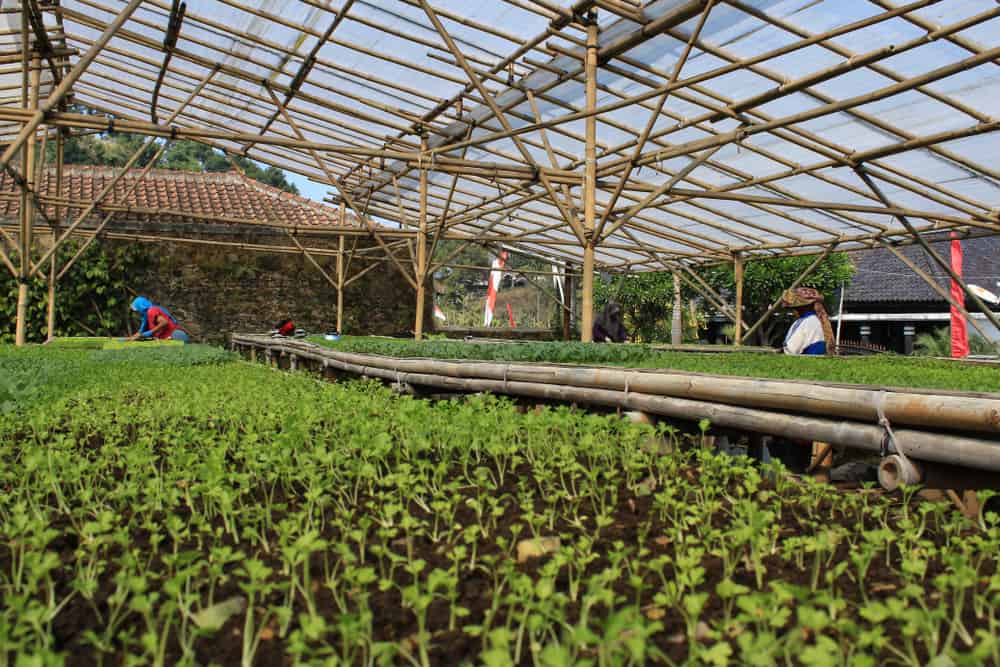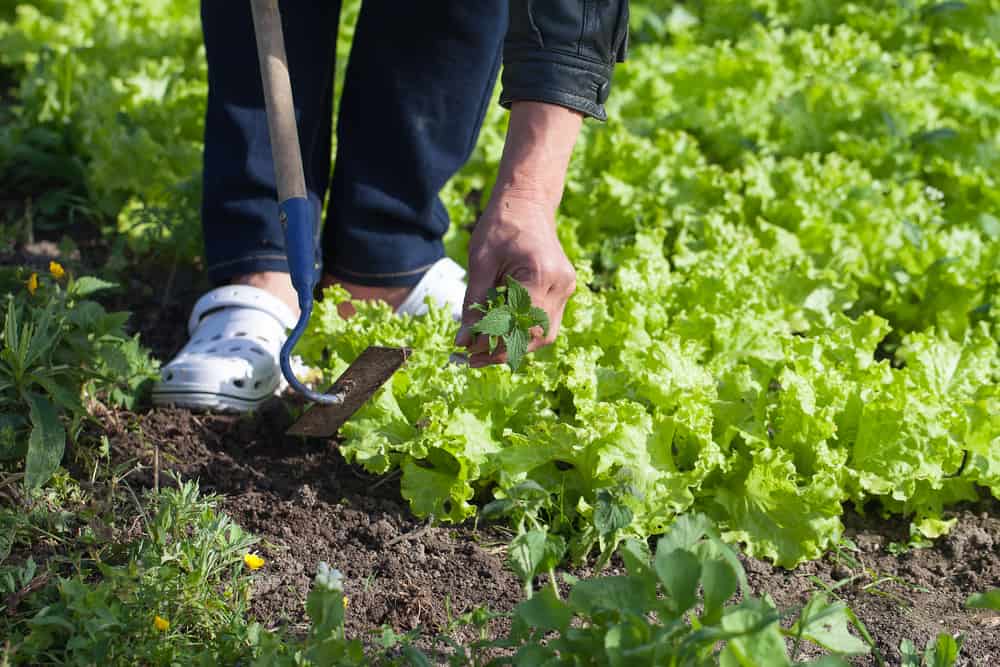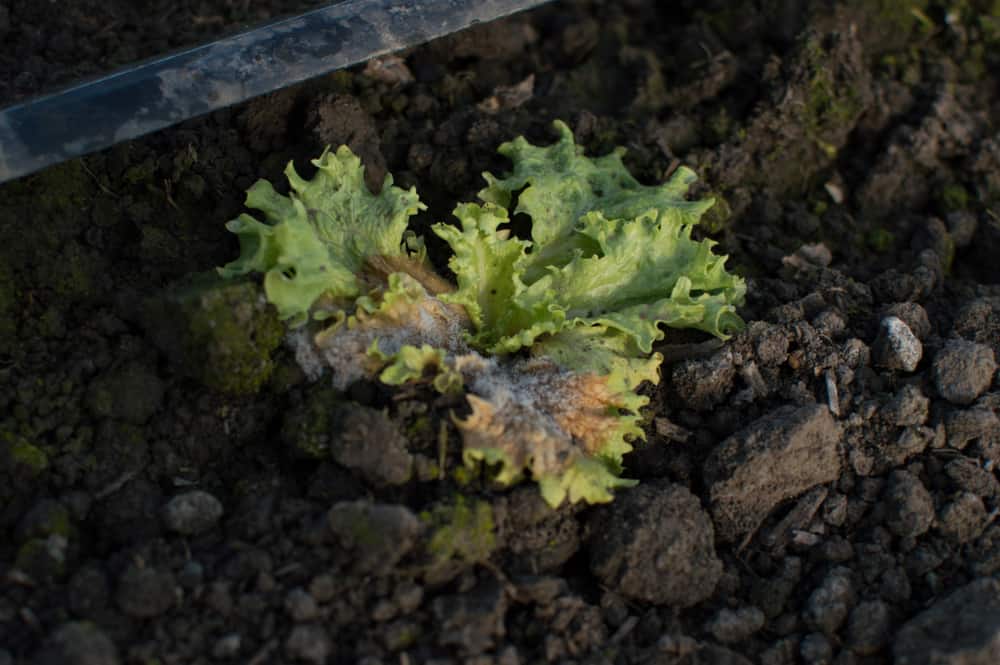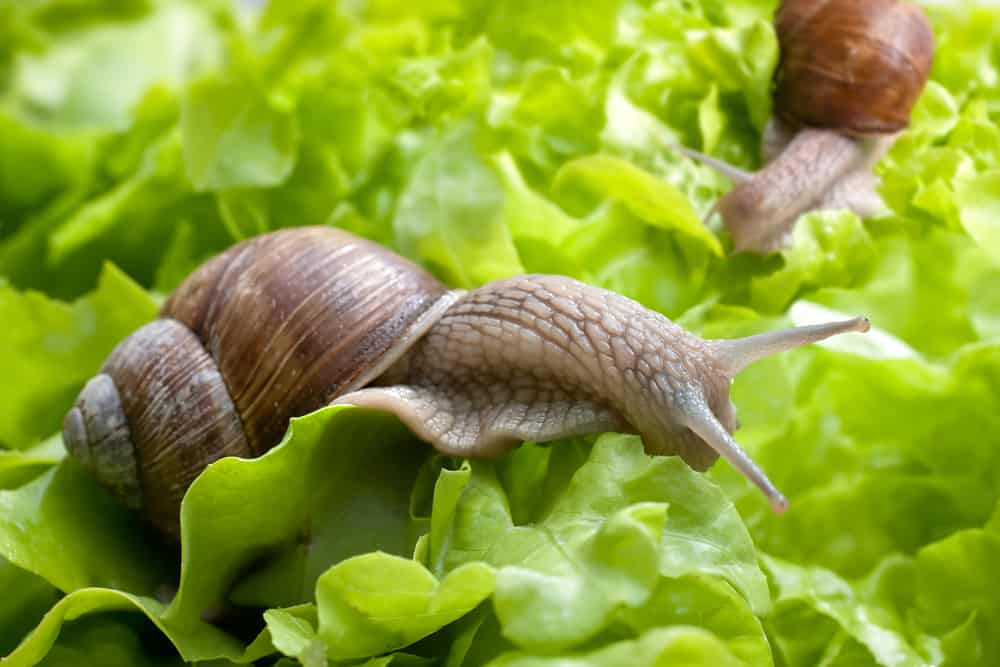Do you know that lettuce will decrease your stress in two different ways, by planting and eating it? However, that is not all. The best thing concerning salad is that you can harvest this veggie almost all year round if you choose an adequate variety. Moreover, you can pick out different flavors, colors, and even textures of this fantastic plant which fits you best.
In general, there are two basic types of this the most widely planted salad veggie in the US. One of them is ‘hearting lettuce’ with a dense center, and the other one is ‘loose-leaf lettuce’ with open leaves and no heart. Anyway, you can always start planting both of them even though your garden is small or the region you live in is cold.
Lettuce Plant History

Lettuce is one of the oldest salads we have ever heard about. It probably originates from India and Central Asia. It is well-known that the ancient Greek and Romans consumed this plant. In fact, its name is derived from the Latin root word for ‘milk’ because mature lettuce stems contain a milky juice.
Among other vegetables, Columbus brought seeds of lettuce to America. We can proudly say that it was one of the first veggies early colonists sowed in the soil of the New World.
Nowadays, we have hundreds of kinds of leaf lettuce at our disposal. We can choose between lime green to dark green varieties, or to be eccentric and enjoy dark purple and bright red ones. One thing is sure; lettuce is at the top of American salads ever.
How to Choose Lettuce for Your Garden

Lettuce is a cool-season crop, and it needs temperatures in a range of 50 to 70 F (10 – 21 C) to thrive. However, you can expect your salad begin to bolt and start flowering once the temperature reaches 80 F (27 C).
You can pick out some long-lasting varieties which do well in the heat of summer, can be productive in most areas throughout the whole growing season, and excellently tolerate frosts. The only way to get the most out of your lettuce is choosing the right variety for the region you live in.
When you live in a warmer climate, you can grow lettuce that is tolerant of high temperatures. In this case, the excellent solution is to grow your salad in the shade of pole beans, tomatoes, or covered with a cloth during midsummer.
I will tell you the secret. If you want to harvest lettuce for the whole season, you should sow a few seeds every few weeks. That way, it will grow unevenly, and you will have a fresh salad on your table for months.
Planting Lettuce in Your Garden

As I have already said, your lettuce will enjoy cold weather. Freely begin planting this veggie as soon as the soil is prepared in the spring.
Pick out the desirable seeds, and sow them in pots. Growing lettuce indoors is quite practical since you can start planting a little bit earlier. However, it is OK with a salad to sow it directly in the garden too. In fact, both ways will provide you a maximum production.
If you choose the first option, you should put some seeds in pots at least a few weeks before the moment when you expect the last frost in the region you live in. When you decide to transplant seedlings in the garden, take care to choose a place with plenty of sunlight. Always keep a few seedlings to fill possible empty spaces which may appear in the garden later.
The process of sowing seeds is pretty simple. Place seeds about 0.25 inches (0.6 cm) deep, cover them with 0.25 to 0.5 inches (0.6 – 1.3 cm) of soil and water them enough. Determine space for sowing according to planting guide from the label.
If you want to sow seeds directly into the ground, you should plant about ten seeds per 1 foot (30.5 cm). Space rows 4 to 18 inches (10 – 46 cm) apart, depending on the variety of lettuce you have chosen.
- Thin leaf lettuce seedlings require to be sown at least 4 inches (10 cm) apart
- Butterhead and romaine lettuce seedlings need to be planted at least 6 to 8 inches (15 – 20 cm) apart
- Head lettuce seedlings require to be sown at least 12 to 18 inches (30.5 – 46 cm) apart
When you decide to sow lettuce too early or quite late, you need to protect it against cold. For that purpose, you can use cloches, horticultural fleece, or plastic tunnels and cover the chosen place.
- You can choose to sow your seeds outdoors from late March to the end of July and get crop during summer and even autumn
- If you decide to sow seeds in early February indoors or in early March under protecting cover, you will enjoy the first salad an early spring crop
- There is also an option to sow seeds outdoors in early August for an early winter crop
- If you have an adequate plastic tunnel, you can plant this veggie in late September as well
Keep in mind that some variations won’t germinate when the soil temperatures are too high. So, you should choose the right variety of salad, sow seeds in the evening, provide some shaded spot, and water them with cold water.
How to Care Leaf Lettuce in Your Garden
The soil
This veggie will grow best in loose, cold, well-draining soil. Take care to choose a sunny place with a partial shadow of taller plants for your salad. For example, your lettuce will thrive in the shade of sweet corn and tomatoes.
To improve drainage and provide necessary nutrients for this plant, you should add some compost or old manure over the top of the ground.
If you notice weak growth of your lettuce, you need to check the soil, since this plant is highly sensitive to the pH lower than 6.0.
The place

The ideal place for growing lettuce during spring and autumn is the one with full sun. On the contrary, if you choose to grow it during the summer, you should provide partial shade for your plants and protect them from direct sun and heat.
Keep in mind that late summer sowing will require deep shade (you may have to provide artificial shade) since seeds need colder soil for germination. Over time, you can remove the shade and give your salad plenty of sunlight as the temperatures begin to decrease.
Watering

To be satisfied with harvesting, you need to provide moderate but constant watering for your lettuce, especially when days are hot during summer. Water your veggies deeply at least once a week, or even more during the dry period.
Adding a thick layer of compost or straw will help the ground retain a satisfying level of moisture. An ideal solution for this crop is the installation of a drip-irrigation system.
Fertilizing

Ideally, you need to fertilize your lettuce approximately three weeks after transplanting. This plant prefers the soil rich in organic material, and you need to provide a steady supply of nitrogen for fast growing. The best options are your own compost, slow-release fertilizer, or some organic alfalfa meal.
Weeding

Monitor your lettuce regularly and keep weeding by hand whenever necessary. Just be careful and take care not to damage the shallow roots of your salad.
Leaf Lettuce Harvesting and Storage

You can harvest almost all lettuce between 30 to 70 days after sowing, but most lettuce varieties actually need 45 to 55 days to mature. Try to collect your salad early in the morning, when the leaves are crisp, tasty, and full of moisture. That way, you will get the best possible flavor.
Basically, you can pick foliage up partially by cutting a few leaves at a time, or to wait a little bit and take the entire bundle. When harvesting every other plant, you will make it easier for others to continue growing.
Avoid allowing your lettuce to grow too long and become bitter and harsh. It is better to sow the second round of seeds and wait for new leaves. However, you can use elongated plants, which are about to bolt, as an add-on to your compost.
After harvesting, you can put your lettuce in a loose plastic bag and keep it in the refrigerator for approximately ten days.
Leaf Lettuce Pests and Diseases
In general, lettuce is a disease-free and pest-free plant, but it would be wise being vigilant. I will list you the most common issues you can face when planting salad.
Tip burn

Basically, this is a physiological condition caused by poor conditions of growing. When moisture of the soil is not consistent, or its pH is improper, you may notice brown, curly leaves of your lettuce with scorched tops.
Bolting

It is a phenomenon of sending up a flower stalk and producing seeds. The result is the bitter flavor of your lettuce and small, tough leaves which become inedible. You will notice bolting when the temperatures increase and daylight last longer. The only prevention is sowing bolt-resistant varieties at the correct time.
Lettuce rot

Unfortunately, rot may attack the foliage of your lettuce. The lower leaves that are in direct contact with the soil are in danger first, and then this disease spreads throughout the whole plant.
Fungi And Bacteria
To avoid these type of diseases, you can simply rotate crops regularly and avoid sowing lettuce at the same place in the garden two years in a row.
Lettuce root aphid

At first, you won’t spot any aphids since they attack the roots of your salad, while foliage stays intact in the very beginning.
However, you will see ants around your lettuce, since honeydew, which aphids produce, is their favorite food. Over time, these tiny white pests will settle on the undersides of your plants’ leaves, which will begin curling and wilting.
Unfortunately, you can’t find a systemic insecticide to control these horrible creatures. Therefore, you should find a way to encourage their natural predators such as lady beetles or to plant chives or onions among your salad.
The next option is applying neem oil or a horticultural soap or covering plants with insect-proof mesh during June, July, and August.
Grey mold (botrytis)

When you grow lettuce in damp conditions, you may spot grey, fuzzy growth of fungi underside salad’s leaves, and small pale, discolored patches on the foliage.
The only remedy for this disease is to remove damaged parts of your plants. If you grow lettuce in the greenhouse, you should regulate moisture by adequate ventilating. Also, avoiding overcrowding is an excellent way of prevention.
Slugs and snails

These creatures feed on your young seedlings. If you look carefully around your plants, you will notice the tell-tale slime trail on the ground and the foliage.
Solve the problem by handpicking these creatures, or use diatomaceous earth, copper tape, beer traps, wood ashes, sawdust, eggshell barriers, and organic bait to keep them away. In the end, there are some effective insecticides as well.
Squirrels, rabbits, and deer

Since they adore leaves of young lettuce, you need to prevent their presence in your garden. Various row covers or fences can be helpful in this case.


Leave a comment